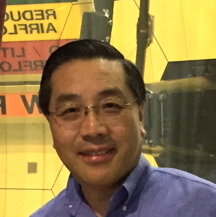
Goddard Space Flight Center, Greenbelt, Maryland 20771
ENGINEERING COLLOQUIUM
Monday, November 20, 2017 / 3:30 PM, Building 8 Auditorium

William W. Zhang
"Astronomical X-ray Optics: Past, Present, and Future"
ABSTRACT -- X-rays are electromagnetic waves with wavelengths shorter than about 10 nanometers. X-rays can be reflected and focused, but only at grazing angles. In the past 50 years, since the discovery of extra-solar X-rays, X-ray astronomy has driven rapid development of X-ray optics. The goals are higher angular resolution and larger photon-gathering areas. Many X-ray telescopes, have now flown, including Einstein (1979), ROSAT (1990), BBXRT (1990), ASCA (1993), Chandra (1999), XMM-Newton (1999), Swift (2004), Suzaku (2005), and NuSTAR (2012). There are also many more exciting missions on the drawing board, including STAR-X, FORCE, AXIS, and Lynx. This lecture will describe unique features of X-ray telescopes, review the technologies that have been used for missions past and present, and describe technologies that will be likely used for missions in the 2020s and 2030s. The talk will pay tribute to GSFC scientists and engineers who have made seminal contributions to astronomical X-ray optics.
SPEAKER -- William Zhang received his PhD in physics from University of Pennsylvania in 1988, working in the nascent field of neutrino astrophysics. He spent two years in a postdoctoral appointment at the Los Alamos National Laboratory, where he built, calibrated, and operated an air shower array to detect ultra-high-energy gamma rays from astronomical sources.
He came to GSFC in 1991 to join the X-ray Timing Explorer team to build and calibrate its proportional counters. After spending a couple of years conducting astrophysical research with XTE, his interest in instrumentation shifted from detectors to optics.
Since 2000, he has led a team of scientists and engineers creating lightweight X-ray optics, developing a precision glass slumping process that culminated in the NuSTAR X-ray telescope launched in 2012. Since 2011, he has led his team in developing a process of making lightweight X-ray optics using mono-crystalline silicon, a technology that promises to dramatically shape the way future X-ray telescopes are made.
Colloquium Committee Sponsor: Vanessa Thomas
Engineering Colloquium home page: https://ecolloq.gsfc.nasa.gov